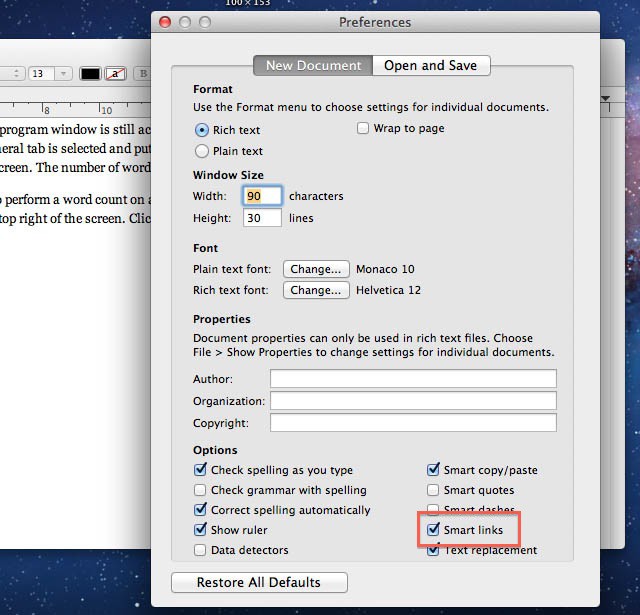
Sep 19, 2019 Console: On Mac and Linux, users usually start their preferred terminal application which then creates and connects to the user's default shell (e.g. However, due to a quirk of history, Windows users traditionally start their shell, and Windows automatically starts and connects a GUI Console app. Jan 09, 2020 TextEdit is the default text editor in macOS, and it’s just as barebones as the default text editor in Windows, Notepad. Linde 394 series service manual. Naturally, many Mac users sooner or later look for an alternative, and they often stumble upon Notepad.
If you need to create a random password outside of Safari or another password manager, you can use a variety of techniques. You can use the Keychain Access app, some Terminal commands, or even make your own Automator action to generate one on demand.
Check out 3 Ways To Generate Random Passwords On a Mac at YouTube for closed captioning and more options.

- Mar 16, 2021 Select any.txt file in the Finder, then press Command-I. In the Open With section, you’ll see a menu showing that TextEdit is the default app. Click the menu and select your preferred text editor, then click Change All. The Mac will remember to open all.txt files in your selected app.
- Instead of closing the terminal and needing to start a new session, source makes the changes available right away in the session we are in. Standard input, abbreviated as stdin, is information inputted into the terminal through the keyboard or input device. Standard output.
- In the TextEdit app on your Mac, choose File Open. Select the document, then click Open. Select the document, then click Open. If your document is stored in iCloud Drive, you can select TextEdit in the iCloud section of the sidebar, then double-click your document.
Here are some of the pieces of code I use in the video:
| Developer(s) | Apple Inc. |
|---|---|
| Initial release | July 1996; 25 years ago with the release of OPENSTEP 4.0[1] |
| Stable release | 1.16 / 12 November 2020; 10 months ago |
| Operating system | Originally released for NeXTSTEP, released for Mac OS X (now macOS) after Apple's purchase of NeXT; Ported to all GNUstep systems (up to 1.6) |
| Type | Text editor, word processor |
| License | BSD-3-Clause |
| Website | developer.apple.com/library/mac/samplecode/TextEdit |
TextEdit is a simple, open-sourceword processor and text editor, first featured in NeXT's NeXTSTEP and OPENSTEP. It is now distributed with macOS since Apple Inc.'s acquisition of NeXT, and available as a GNUstep application for other Unix-like operating systems such as Linux.[2] It is powered by Apple Advanced Typography and has many advanced typographic features.
Implementation[edit]
TextEdit replaced the text editor of previous Macintosh operating systems, SimpleText. TextEdit uses the Cocoa text system to read and write documents in Rich Text Format (RTF), Rich Text Format Directory, plain text, and HTML formats, and can open (but not save) old SimpleText files. It also has access to the operating system's built-in spell-checking service. The version included in Mac OS X v10.3 added the ability to read and write documents in Word format, and the version in Mac OS X v10.4 added the ability to read and write Word XML documents. The version included in Mac OS X v10.5 added read and write support for Office Open XML and OpenDocument Text. The version included in Mac OS X v10.6 added automatic spelling correction, support for data detectors, and text transformations. The version included in Mac OS X v10.7 added versioning of files, and Autosave similar to iOS.
Formatted text, justification, and even the inclusion of graphics and other multimedia elements are supported by TextEdit, as well as the ability to read and write to different character encodings, including Unicode (UTF-8 and UTF-16). TextEdit automatically adjusts letter spacing in addition to word spacing while justifying text. TextEdit does not support multiple columns of text.
The high-resolution TextEdit 1.5 icon found in Mac OS X versions starting with 10.5 (Leopard) features an extract from Apple's 'Think different' ad campaign. This was replaced by a blank sheet of notebook paper in 10.10 (Yosemite).
Source code[edit]
Apple formerly distributed TextEdit's source code as part of the documentation of its integrated development environment (IDE) Xcode. On the Internet, the source code of TextEdit can be found in Apple's Mac Developer Library.[3] The following quote is from the characteristic part of the BSD-3-Clause-compliant license text included in the source code:
[..] In consideration of your agreement to abide by the following terms, and subject to these terms, Apple grants you a personal, non-exclusive license, under Apple's copyrights in this original Apple software (the 'Apple Software'), to use, reproduce, modify and redistribute the Apple Software, with or without modifications, in source and/or binary forms; provided that if you redistribute the Apple Software in its entirety and without modifications, you must retain this notice and the following text and disclaimers in all such redistributions of the Apple Software. Neither the name, trademarks, service marks or logos of Apple Computer, Inc. may be used to endorse or promote products derived from the Apple Software without specific prior written permission from Apple. Except as expressly stated in this notice, no other rights or licenses, express or implied, are granted by Apple herein, including but not limited to any patent rights that may be infringed by your derivative works or by other works in which the Apple Software may be incorporated.[..]
See also[edit]
References[edit]
- ^'Logiciels NeXT (Fr)'. Retrieved March 25, 2019.
- ^'Backbone—A GNUstep based desktop environment'. Retrieved September 4, 2007.
- ^'About TextEdit'. Apple, Inc. August 26, 2013. Retrieved August 17, 2017.
External links[edit]
| Wikimedia Commons has media related to TextEdit. |
Textedit Mac Terminal Login
- TextEdit in Mac Developer Library (with source code)
